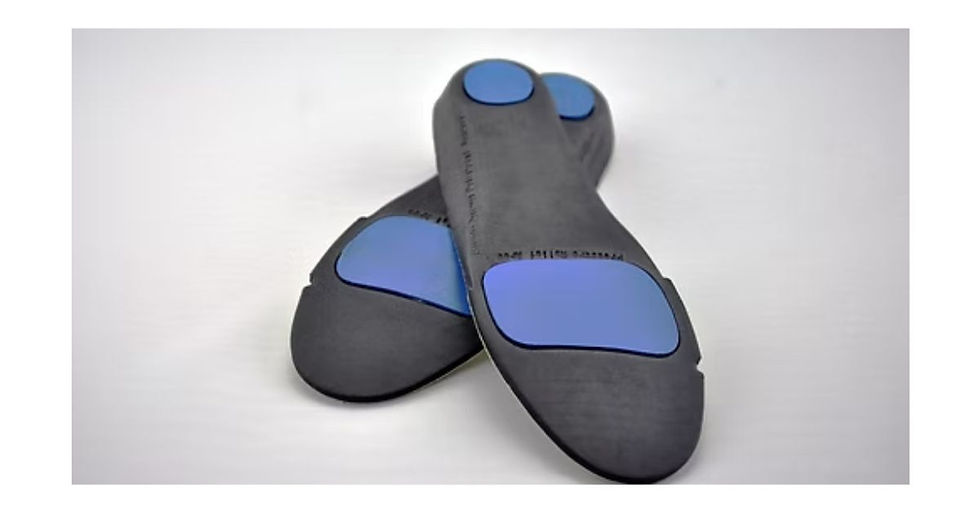Finding Relief from Lymphedema with Arm Compression Sleeves
- Lifeforce Hub Singapore

- May 4, 2023
- 4 min read
Updated: Sep 26, 2024

Lymphedema can cause discomfort and swelling. However, individuals with this condition can find relief through the use of arm compression sleeves.
These sleeves are designed to provide support and prevent pain by applying compression to the whole arm. Compression sleeves are elastic garments that can be worn comfortably throughout the day. They are an effective solution for reducing swelling and improving circulation in the arm.
What are the Causes of Lymphedema?
Lymphedema is commonly associated with breast cancer, but it can also be caused by other medical conditions that result in damage to the lymphatic vessels.
In fact, there are numerous factors that can lead to lymphedema, whether or not lymph node dissection is involved:
Scar tissue formation near lymphatic vessels after surgery can lead to lymphedema.
Damage to lymphatic vessels during an operation can cause lymphedema.
Tumour growth can compress lymph nodes and vessels, resulting in lymphedema.
It is recommended to use arm compression sleeves for lymphedema to control the symptoms and prevent its development in the early stages. Compression sleeves can also improve mobility by providing support to the affected limb.
However, it is important to understand the different types of compression sleeves available, the benefits they offer, and how to properly wear them for maximum effectiveness.
Types of Arm Compression Sleeves
A range of compression sleeves is available on the market, so it's important to be well informed to make an optimal selection.
Here are some of the most significant types of arm compression sleeves to consider:
·Sleeves
The compression sleeves come in various styles and materials, extending from the wrists to the upper arms.
Gloves
Compression gloves are fingerless and are typically worn in conjunction with a compression sleeve. In some cases, wearing a compression sleeve can cause increased edema in the hand. However, wearing a compression glove in addition to the sleeve can help reduce this effect.
·Dual-Arm (only made-to-measure option available for this length)
Dual-arm compression garments are also referred to as bilateral compression sleeves. They consist of two separate sleeves for each arm or hand that are connected over the back with a fabric that goes across the shoulders. It's important to be aware of these various types of arm compression sleeves when considering your options.
Purchasing Compression Sleeves for Arm
When purchasing compression sleeves for lymphedema in the arm, it's crucial to seek advice from experts such as experienced retailers and lymphedema therapists.
Poorly fitting sleeves can exacerbate lymphedema symptoms, so it's important to consider the following key factors before making a purchase:
·Ensuring Proper Fit
It's important to ensure a proper fit when trying on compression sleeves for lymphedema in the arm. Avoid sleeves that are too tight in areas such as the wrist, arm, or elbow, as this can result in numbness and tingling sensations.
·Ensuring Appropriate Coverage and Comfort
Compression sleeves for lymphedema in the arm should cover the entire area of swelling and provide a comfortable fit that is not too loose or tight. The compression should feel even throughout the entire sleeve.
It's important to keep these factors in mind when purchasing compression sleeves for lymphedema or compression stockings for spider veins. This will help ensure that you make an informed decision and choose the most appropriate product for your needs.
Also Read - Spider Veins Prevention and Treatment
When Should a Person Wear Arm Compression Sleeves?
It completely depends on the situation. There are many stages of lymphedema when a person wears arm compression sleeves!
Stage 1
At this stage of lymphedema, the arms may feel heavy and appear swollen, and applying pressure may cause a temporary indentation to form.
Stage 2
In advanced stages of lymphedema, the affected arms may feel hard and appear noticeably swollen, and pressing on the affected area may not result in a visible indentation.
Stage 3
This stage, characterized by significant enlargement of the affected arm, typically occurs only in individuals with breast cancer who develop lymphedema.
Compression sleeves are typically recommended for individuals with mild lymphedema, or stage 1. For those with more advanced stages of lymphedema, such as stages 2 or 3, a process called complete decongestive therapy may be more effective in reducing swelling.
It is important to consult with a healthcare professional to determine the appropriate treatment for your specific condition and to select compression sleeves or other garments that are suitable for your needs.
What are the Benefits of Arm Compression Sleeves?
Below, we have curated a list of major benefits you can experience by wearing arm compression sleeves:
Faster Recovery
Compression sleeves can speed up recovery by increasing blood flow velocity, which aids in faster healing and recovery.
Protection for the Arms
Compression sleeves can be likened to an additional layer of skin on your arms, offering protection from injuries such as scrapes and burns.
Muscle Support During Exercise
When lifting weights or doing other types of exercise, the muscles in your arms, such as the biceps and triceps, can vibrate and cause discomfort. Wearing compression sleeves during intense exercise can help to minimize this muscle vibration, reducing the risk of muscle strain or injury.
Conclusion
Don't let lymphedema interfere with your daily comfort. Compression sleeves can help reduce pain and prevent future swelling. If you're looking for high-quality arm compression sleeves, consider contacting Lifeforce Limb & Rehab Pte Ltd. We offer a wide range of lymphedema compression sleeves in different patterns and colors to suit your style and occasion. We also provide knee support for knee pain.
Explore our range of arm compression sleeves for lymphedema to reduce swelling, improve circulation, and increase your comfort throughout the day!
Click here for "Stockings for Varicose Veins"




Comments